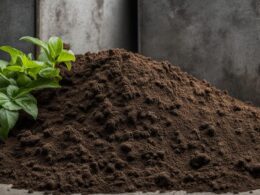Quick Summary
- Earthworms have a unique life cycle that involves both asexual and sexual reproduction, with the ability to mate with themselves or other worms for genetic diversity.
- The mating process involves joining at the clitellum, exchanging sperm, and cocooning with eggs and sperm, leading to the creation of dormant cocoons.
- Earthworms are important for maintaining garden health by breaking down organic matter and increasing nutrient availability in the soil.
- Observing and protecting earthworms in the garden ecosystem is crucial for their survival and the overall health of the garden.
Do Caterpillars and Earthworms Have Similar Diets?
Do caterpillars and earthworms have similar diets? While earthworms mainly consume decaying plant matter in the soil, caterpillars have more diverse diets. Caterpillar diets vary depending on the species, but they commonly feed on leaves, flowers, and even other insects. Therefore, although both creatures play important roles in their ecosystems, their dietary preferences differ significantly.









